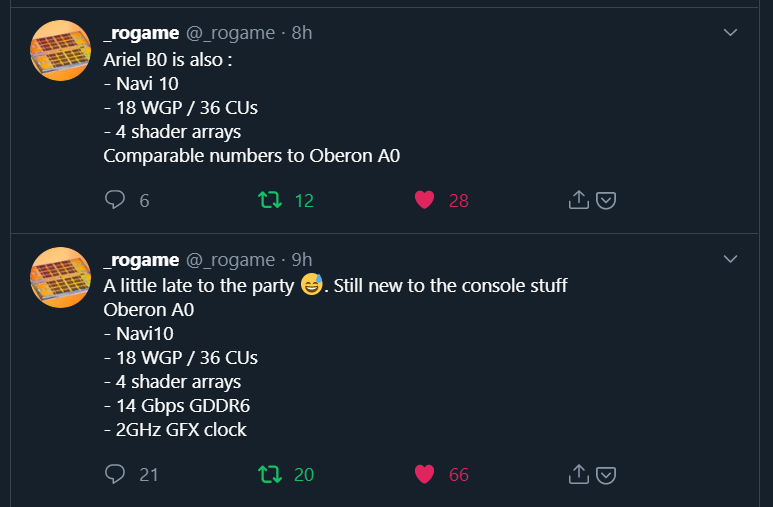Why do you people think Flute is Navi 10?
Point of my entire post here -
https://forum.beyond3d.com/posts/2106613/ is that Flute is
not Gonzalo, and Oberon is
not Ariel.
Ariel is chip. Oberon is chip. Gonzalo is platform. Flute is platform. Ariel is found in Gonzalo benchmark, Oberon is found in Flute benchmark (check PCI IDs).
PCI ID for Ariel is different then the one for Oberon. Oberon is later then Ariel. Ariel is only one found to have any resemblance to Navi 10 through driver data mining, Oberon was never found there. Only reason why people think Oberon is Navi 10 is because it runs regression test on Ariel testlist specifications.
View attachment 3642
But entire point of regression test is testing functionality (native/bc1/bc2) of previous version of chip (Ariel), therefore RT/VRS would never be shown there, because Ariel (ie Navi 10 Lite) doesn't have one.
Its very very simple to grasp and entire logic cannot be explained any other way.
Ariel - Navi 10 Lite chip, RDNA1, perhaps used by Sony to get BC working on RDNA architecture
OBR - RDNA2 chip, regression tested against Ariel testlist in Github leak

